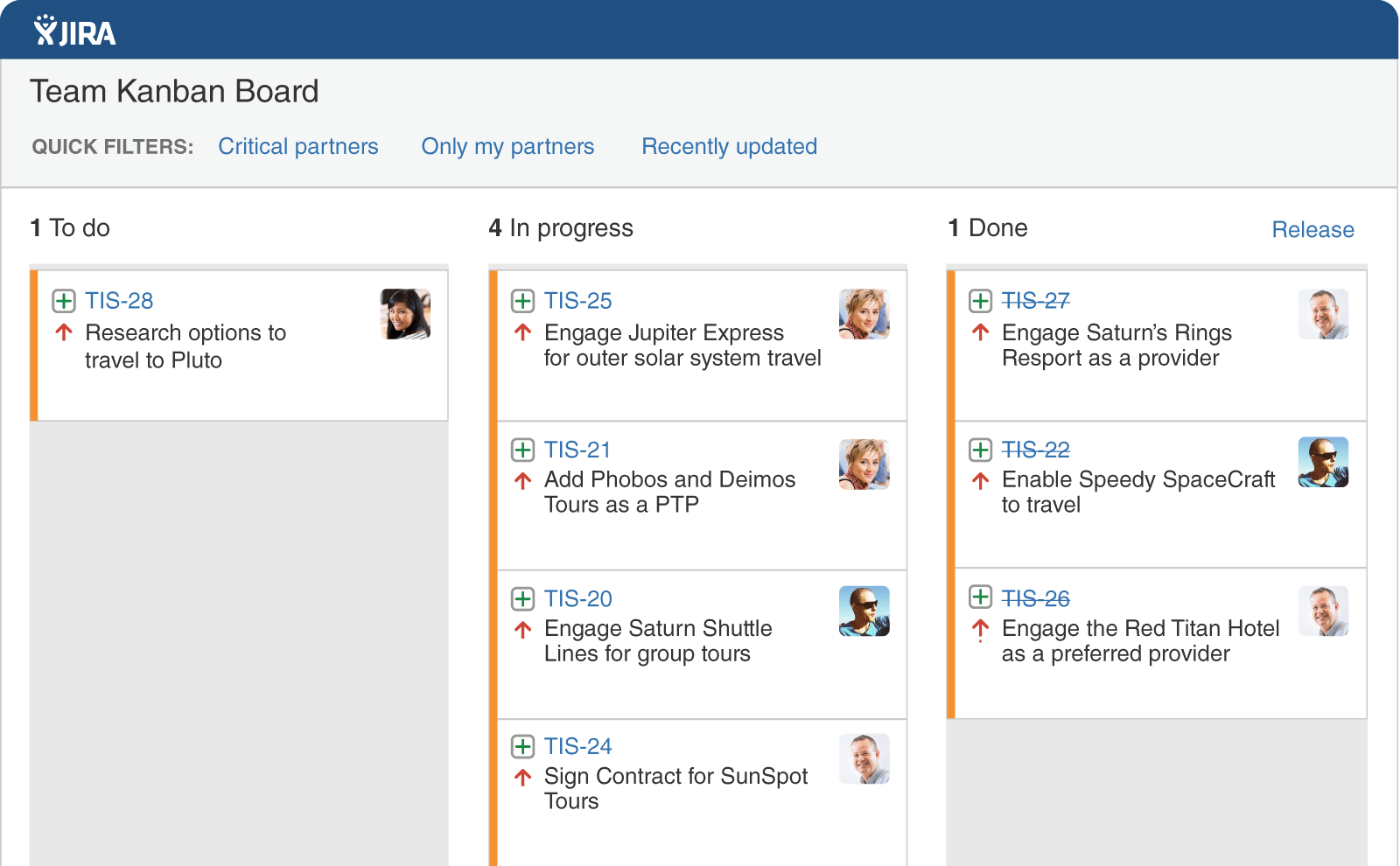This article has been updated for 2020.
Founded in 2002, Atlassian has quickly grown to be one of the most popular project management software vendors on the market. They currently serve nearly 12,000 clients worldwide and have shown significant growth in market presence beginning in Q2 of 2017.
Their success is due, in large part, to the quality of their software. Atlassian doesn’t employ sales staff, and relies on word of mouth and customer satisfaction to grow.
One of their best selling products is JIRA — a project management and issue tracking tool for software developers (although it can also be used for projects outside of IT). If you’re in the market for a project management tool, you’ve probably come across the name, and JIRA may even be on your shortlist.
Also Read: Trello vs. JIRA: Choosing an Agile Project Management Tool
JIRA is an excellent piece of software, but that doesn’t mean it’s for everyone. There are reasons you might love it, and reasons you might not. Before you sign a contract, make sure you look at some JIRA alternatives — or click the image banner to receive personalized project management software recommendations.
What is JIRA?
Before we look at some of those alternatives, let’s nail down exactly what JIRA is, who it’s for, and what it does.
Atlassian calls it “issue and project tracking” software — “issue,” of course, referring to the many bugs, defects, and problems that can arise during a development project. JIRA, at its core, is designed to help teams work together to solve these problems and deliver a smooth finished product. Typically, the teams involved include developers, help desk agents, and quality assurance.
JIRA is available on-demand through a monthly subscription (software-as-a-service), or it can be deployed on your own servers for an upfront license. Here are some of the features you’ll find in the core product (sans add-ons):
- Custom workflows and dashboards
- Bugs and defect management
- Requirements management
- Source and issue integration
- Search engine with filters
- Reports
- Native mobile apps
Why might you consider an alternative?
Well, JIRA does have a few drawbacks. For one thing, a lot of the functions some teams might consider essential to their workflow are not included in the basic JIRA product; they require add-ons. Knowledge base management requires the Confluence add-on; code repositories require Stash; agile development requires JIRA Agile; and so on.
When you add up all the costs for these separate tools, JIRA can start to look pretty expensive (although they do offer bundled pricing for JIRA + Agile and JIRA + Service Desk).
Secondly, some users find the software a little unwieldy because it takes a lot of configuration to set up and (finally) use. Consider this comment from a JIRA user in a Y Combinator forum:
“I strongly dislike JIRA . . . It’s like a car with a top speed of 30mph, with a lever for each and every moving part of the car. Too many pieces of it are customizable, and all of the things which can be customized must be customized for anything to work. The amount of effort it takes to use JIRA is almost enough to write your own issue tracker.”
A valid point.
But then again, your experience will largely depend on whether you use JIRA’s default workflows or take the time to customize your own. If you like the idea of JIRA but aren’t sold on its complexity, it may not be the best project management software for your team.
With no further ado, let’s take a look at four of JIRA’s most obvious competitors.
Note: If you’re looking for a platform that let’s you receive a wider variety of issue reports directly from customers, you might compare some of our popular help desk solutions, like Freshdesk vs Zendesk.
Assembla
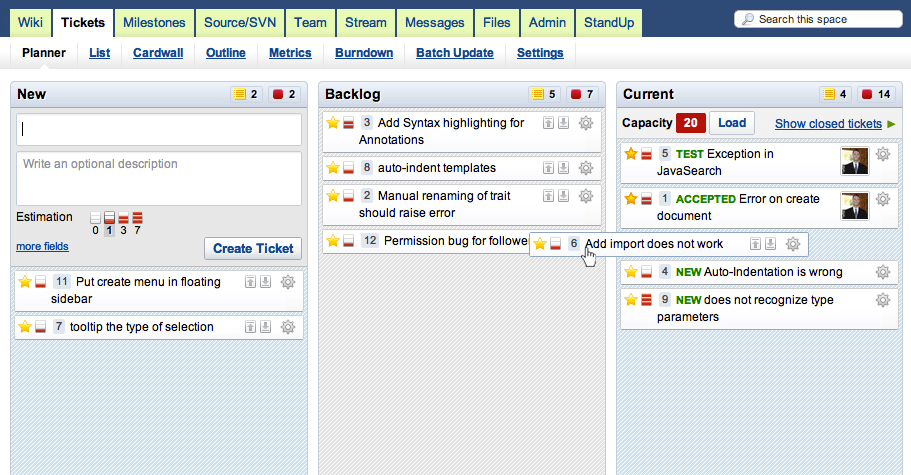
Assembla is a younger platform than JIRA but offers a broader range of functionality in its core product. It is designed to help software teams manage tasks, collaborate and share resources, “squash bugs,” and ship code. The “Workspaces” edition is geared toward agile and distributed teams. It uses tickets, Kanban cards, and milestones to keep teams move through the development and issue tracking process.
Assembla offers many functions right out-of-the-box that JIRA requires as an add-on, including subversion and git hosting, code deployment, agile tools, time tracking, and social media-style collaboration (message boards, @mentions, activity stream). The greatest irony is that Assembla is actually less expensive.
Potential drawback: Does not offer a help desk software module
Unique Features:
- Unlimited SVN and Git Repositories
- Wiki Tool / Knowledgebase
- Built-in time tracking
- Kanban cards
- Social-style collaboration
- Search tool
- Git workflows (fork, merge, peer review)
Axosoft

Axosoft is specifically marketed as an agile/scrum project management tool for software development teams. Where Assembla and JIRA place an emphasis on issue tracking, Axosoft focuses more on building software and getting it out on time through release planning and project analytics (burndown charts, velocity measurement). In “daily standup” mode, Axosoft can even predict a ship date for your project based on current progress and velocity.
Axosoft also distinguishes itself from competitors by providing built-in customer service features and a customer portal. This helps developers and quality assurance reps stay accountable to customer demands, bug reports, and feature requests. You can also set up external dashboards for project stakeholders, so they can keep tabs on progress through a private link.
Potential drawback: No built-in source code management
Unique Features:
- Wiki pages
- Customer portal/help desk
- Standup mode
- Kanban cards
- Burndown charts
- Release planning
monday.com
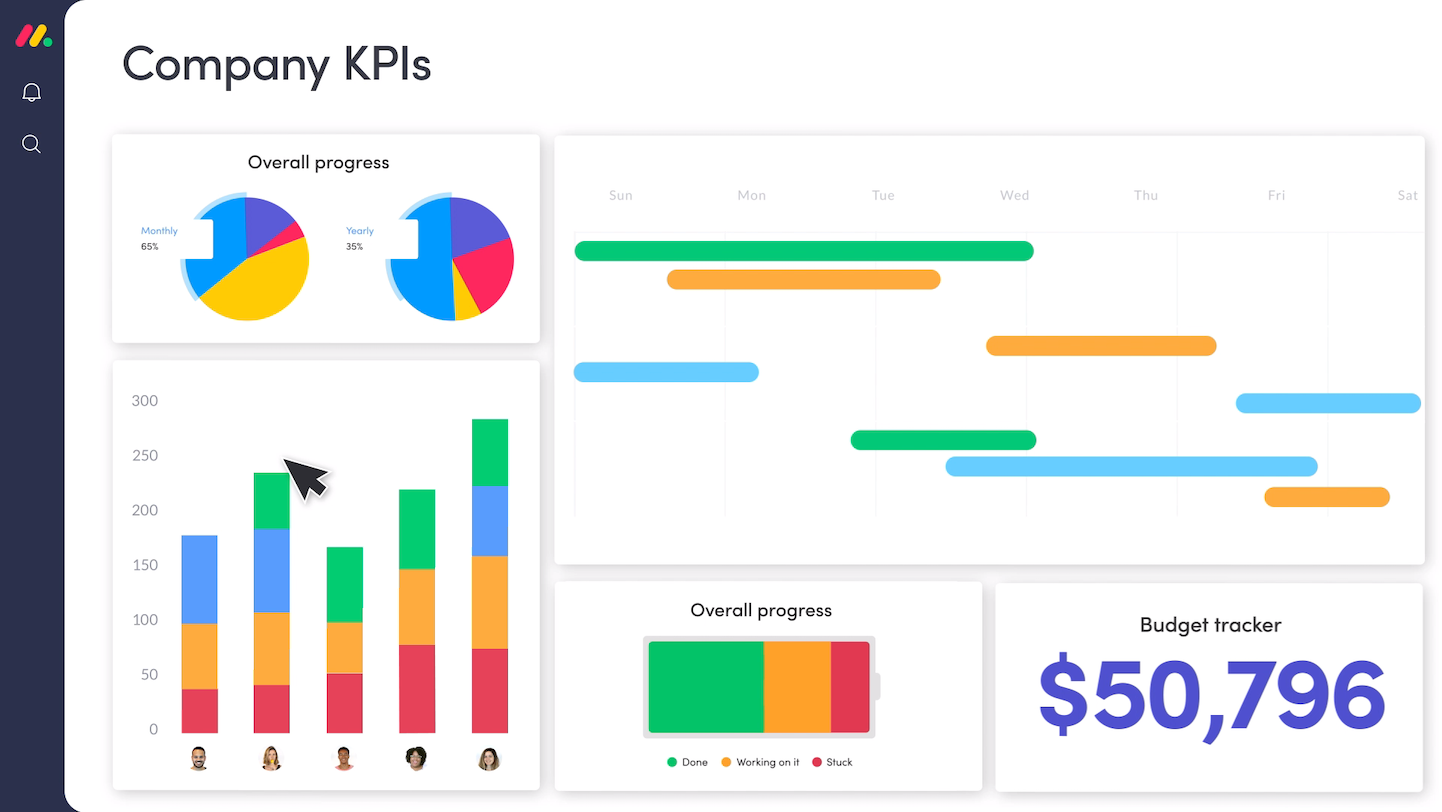
monday.com is a versatile and collaborative project management software launched in 2012. It offers dashboards that users can design and share with team members and a document collaboration platform for shared content creation and revision. Its App framework allows users to develop their own applications atop monday.com’s existing platform.
Like JIRA, monday.com allows for plenty of customization, but unlike JIRA, it’s not excessive. If you don’t want to build too many things, it offers plenty of templates, allowing you to choose how much you customize. monday.com automates basic workflows to eliminate extraneous tasks and easily integrates with many other popular software, such as Slack, HubSpot, and LinkedIn.
Potential drawback: No built-in source code management
Unique Features:
- App Framework
- Low-code development for apps and boards
- Two-factor authentication
- Tags for filtering
- @mentions
- Knowledge base
Gemini

Gemini, by Countersoft, is an agile project management tool with built-in helpdesk and issue tracking. It’s available in a per user license as “Gemini express,” or for larger teams through “Gemini Enterprise,” which can be installed on-premises.
Gemini has a unique model for collaboration: team members work from their own, private workspaces, but they can also come together to track progress and share information in custom team workspaces. Additionally, users can subscribe to email alerts, daily digest notifications, and other co-workers to stay in the loop on tasks and requirements. Similar to Axosoft, Gemini includes help desk ticketing, bug tracking, and agile tools in its core product.
Potential drawback: No built-in source code management
Unique Features:
- Test management
- Requirements capture
- Private and shared workspaces
- Issue/bug tracking
- Help desk
- Agile and scrum tools
- Time tracking
- Subscription-based notifications
Easy Projects
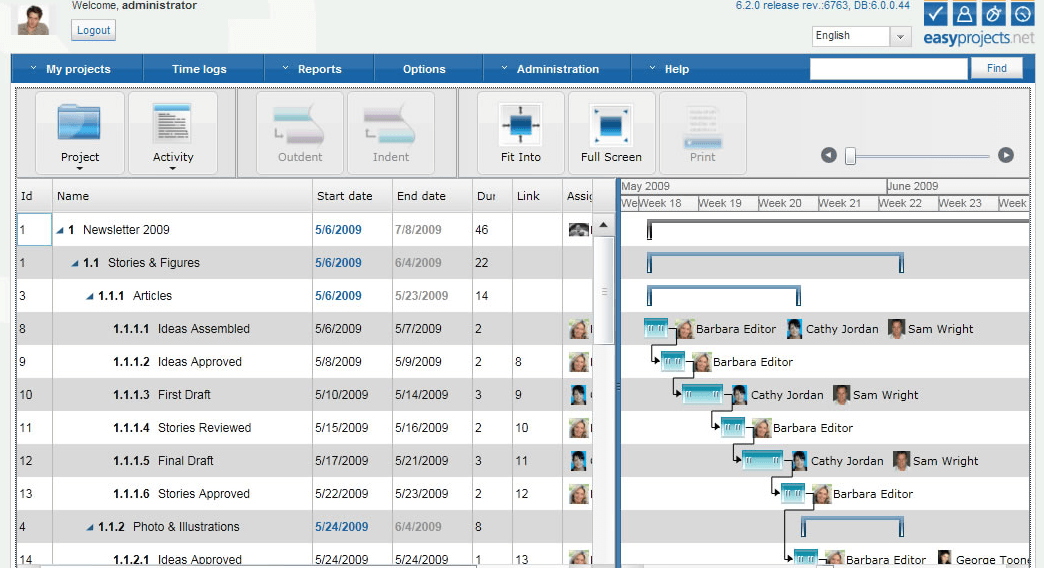
Easy Projects is an IT project management tool built for IT teams. In addition to many of the usual project management features like Gantt charts and time tracking, the tool also has extras that help projects run smoothly and without sidetracking. Audit logs, file uploads with version controls, and change management request tools help Agile IT teams stay focused on the task at hand. Easy Projects is also easily extensible across the enterprise with integrations to all sorts of tools your company already uses like Salesforce, Quickbooks, Zendesk, and Gmail. Any integration that’s not already built can be accessed through the Easy Projects RESTful API or by connecting with Zapier. Potential drawbacks: no in-app source code repository. Unique features:
- Unlimited projects and tasks
- Multiple dependencies
- Resource loading report
- Time tracking
- Custom dashboards
- Collaboration via messaging
Agilean
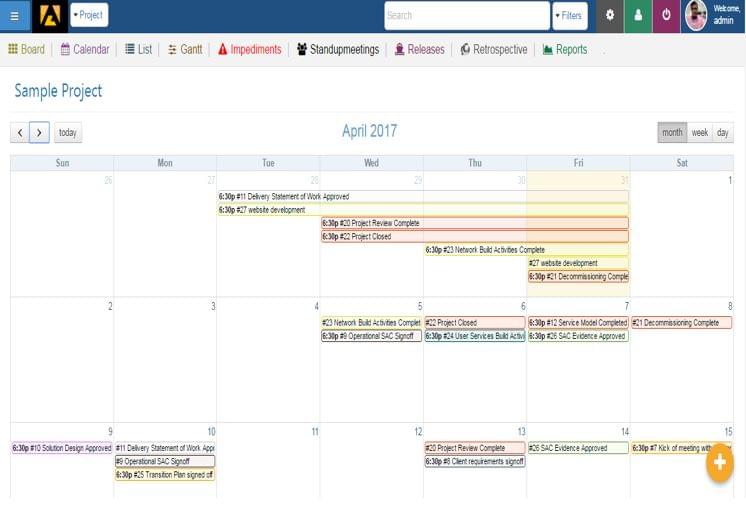
Agilean is a kanban and scrum tool designed to help developers and project teams get work done faster and with fewer impediments. With lots of different task and issue views, teams and individuals can use Agilean for their custom workflows without disrupting the views or workflows of other collaborating teams. Built with scrum and Agile work in mind, Agilean also includes features that keep teams from getting stuck mid-sprint, including a whole set of features to identify and dispense with impediments before or as they happen and tools to guide standup meetings. Potential drawbacks: no source code repository Unique features:
- Cumulative Flow and Burn-Up
- Compare Estimated Vs Actual time
- Retrospective tools to analyze previous projects
- Release-focused features to smooth release processes
- Integrations with Slack, Github
Planbox
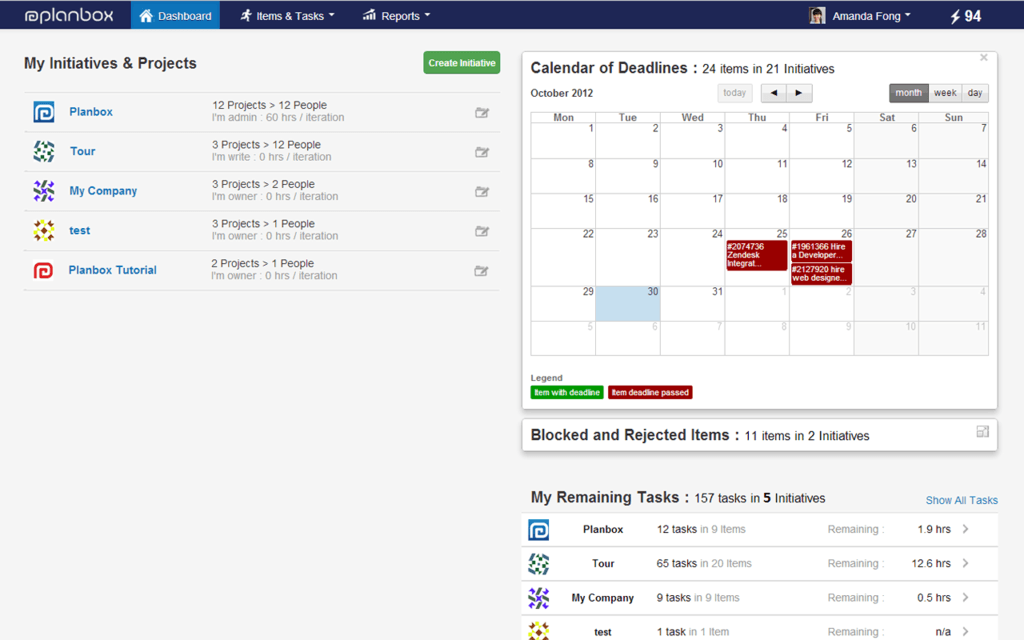
Planbox is an AI-powered innovation management platform that includes project management tools to help developers and project teams streamline their workflows and get more done. The platform includes project management tasks and issue tracking with work management tools that ease team-wide collaboration. Status updates on tasks automatically trigger notifications to the teammate in charge of dependencies, so work never gets missed. Use Planbox for planning software and project releases and analyzing the results of previous projects. Track all changes in the project reports including status updates, additions, removals, work completed, and work in progress. Each collaborator’s movements is documented in a comprehensive audit trail that can be used to better understand and streamline workflows. Potential drawback: no internal helpdesk system Unique features:
- Resource allocations
- Automatic status change to notification
- Integrations with popular helpdesk systems
* * *
There are literally hundreds of project management tools on the market, and these six are by no means the only viable JIRA alternatives. Using custom fields and workflows, you can make just about any project tracker conform to the needs of a dev team.
That said, some solutions are better optimized than others, and if you make the right choice for your team, you shouldn’t have to do that much configuration on the front end. To read more about issue tracking and agile project management or to get free personalized recommendations, visit our project management product selection tool, or give us a call to chat with a Technology Advisor about your specific software requirements.

